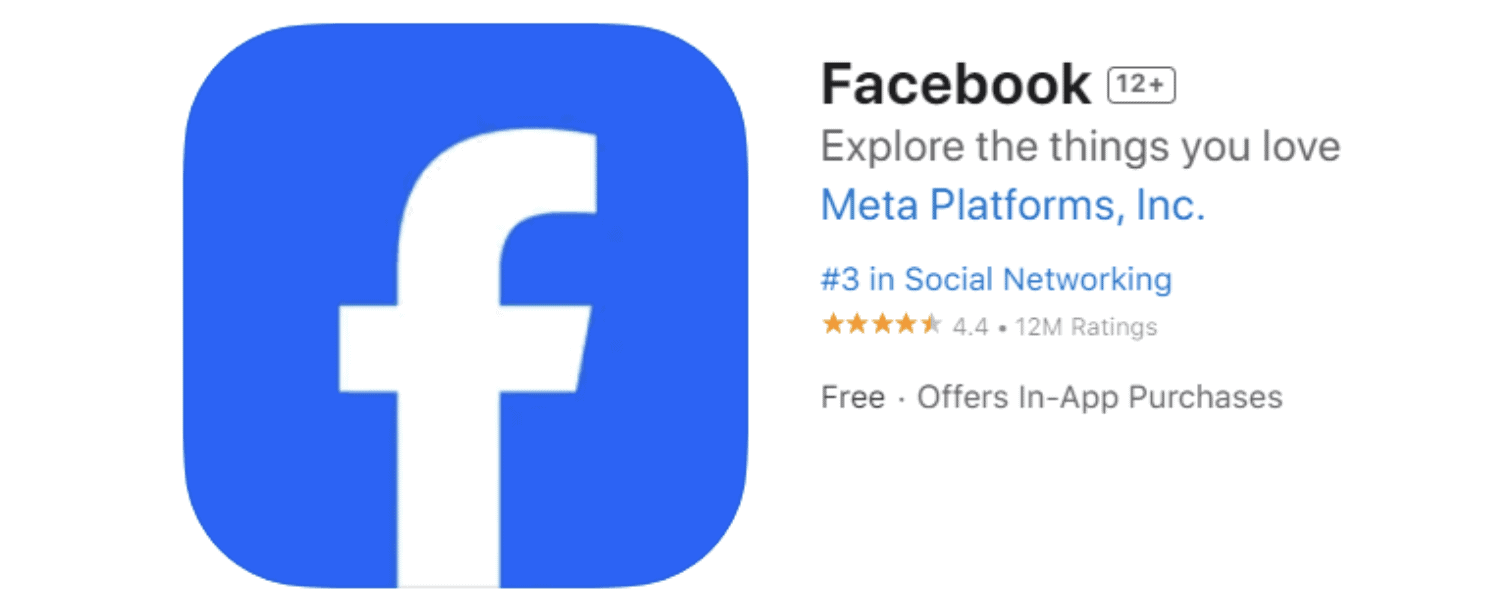
ASO Made Simple: 3 Steps to Boost Your App’s Ranking
App Store Optimization (ASO) is key to increasing your app’s visibility and ranking on platforms like Apple’s App Store and Google Play Store. With countless tips and strategies available, ASO can often seem overwhelming. However, it doesn’t have to be complicated. In fact, ASO can be simplified into just three straightforward steps.
So, what are these ASO steps to boost app ranking? That’s exactly what we’re going to explore today. In this article, you’ll discover practical and easy-to-implement techniques to significantly boost your ASO campaign and enhance your app’s performance.
Step 1: Optimize Keywords
Keyword optimization in App Store Optimization (ASO) is the process of researching, selecting, and strategically using relevant keywords in various elements of your app’s listing to improve its visibility and ranking in app store search results.
Keyword optimization is crucial because it directly affects how easily users can find your app. When users search for apps, they typically use specific terms or phrases related to the app they want. By optimizing your app’s keywords, you increase the chances of your app appearing in these search results, leading to more downloads and higher rankings.
Key Elements of Keyword Optimization
1. Title and Subtitle
- Title: The app title is one of the most critical factors in ASO. It should include the main keyword that best describes your app’s core functionality. A well-optimized title can significantly boost search rankings.
- Subtitle (iOS) or Short Description (Google Play): This field provides additional space to include secondary keywords. It should succinctly convey the app’s unique value proposition while incorporating relevant keywords.
2. Keyword Field (iOS)
Apple’s App Store has a specific field for keywords. Utilize this space to list keywords that are relevant to your app. Separate keywords with commas and avoid using spaces to maximize the character limit. Focus on high-traffic, relevant terms that potential users are likely to search for.
3. Description
- Google Play Store: The app description is indexed by Google Play, meaning the keywords used here can help improve search visibility. Integrate keywords naturally within a well-written, informative description that highlights the app’s features and benefits.
- Apple App Store: While the description is not directly indexed for search app store ranking purposes, a compelling description can influence user downloads by clearly explaining the app’s features and advantages.
Steps for Effective Keyword Optimization
1. Keyword Research:
Use ASO tools (e.g., App Annie, Sensor Tower, Keyword Tool) to identify high-traffic and relevant keywords. Look for terms with a good balance of search volume and competition.
Analyze competitor keywords to gain insights into which terms are driving traffic to similar apps.
2. Keyword Selection:
Choose keywords that are highly relevant to your app’s functionality and target audience. Prioritize those with the highest potential to attract users.
Avoid overly competitive keywords that might be difficult to rank for, especially if your app is new.
3. Keyword Implementation:
Integrate the selected keywords into the app title, subtitle, and description (for Google Play). Ensure the keywords fit naturally and enhance the overall readability of the text.
Regularly update your keywords based on performance data and changes in user search behavior.
Example of Keyword Optimization
- Title: “FitTrack – Home Workout & Fitness Tracker”
- Keywords: fitness tracker, workout, home workout
- Subtitle: “Get Fit with Personalized Home Workouts”
- Keywords: personalized workouts, home fitness
- Description (Google Play)
“FitTrack offers personalized home workouts tailored to your fitness goals. Whether you’re looking to lose weight, build muscle, or stay fit, our app provides comprehensive workout plans and tracks your progress. With features like daily reminders and detailed performance analytics, FitTrack is your ultimate fitness companion.”
- Keywords integrated: personalized home workouts, fitness goals, lose weight, build muscle, stay fit, workout plans, performance analytics
By carefully selecting and integrating keywords into these elements, your app becomes more discoverable, leading to higher search rankings and increased downloads.
Step 2: Encourage and Manage Reviews and Ratings
App ratings and reviews are critical components of App Store Optimization (ASO) as they directly impact an app’s visibility, credibility, and ranking in app store search results. Here’s a detailed explanation of app ratings and reviews in the context of ASO:
Importance of App Ratings and Reviews
Image source: Google Play Store
- Influence on Rankings:
Both the Apple App Store and Google Play Store use app ratings and reviews as significant factors in their ranking algorithms. Apps with higher ratings and positive reviews are more likely to rank higher in search results and featured sections.
- User Trust and Conversion Rates:
High ratings and positive reviews build trust with potential users. When users see an app with a high rating and favorable reviews, they are more likely to download it. Conversely, low ratings and negative reviews can deter potential users.
- Feedback for Improvement:
Reviews provide valuable feedback from users, highlighting areas for improvement and new feature requests. Regularly updating the app based on user feedback can lead to better user satisfaction and improved ratings over time.
Components of App Ratings and Reviews
1. App Ratings:
- Star Ratings: Users rate apps on a scale (typically 1 to 5 stars). The average star rating is prominently displayed on the app’s store page and in search results.
- Overall Rating: The cumulative average of all user ratings. A higher overall rating positively influences app store ranking and user perception.
2. App Reviews:
- Text Reviews: Users can write detailed feedback about their experience with the app. Reviews often include praise, complaints, feature requests, and suggestions.
- Review Length and Detail: Longer, more detailed reviews tend to carry more weight with potential users and can provide more actionable feedback for developers.
Strategies for Managing App Ratings and Reviews
1. Encourage Positive Reviews:
- Prompting Users: Use in-app prompts to encourage satisfied users to leave positive reviews. Timing is crucial—ask for reviews after a positive user experience, such as completing a task or reaching a milestone.
- Incentives: Offer incentives, such as access to premium features or discounts, in exchange for honest reviews. Ensure that this complies with app store guidelines.
2. Respond to Reviews:
- Engagement: Actively respond to user reviews, thanking users for positive feedback and addressing any issues raised in negative reviews. This demonstrates that you value user feedback and are committed to improving the app.
- Resolution: For negative reviews, provide solutions or timelines for fixes. This can turn dissatisfied users into loyal ones and may lead them to update their reviews.
3. Regular Updates:
- Continuous Improvement: Regularly update the app to fix bugs, add new features, and improve performance based on user feedback. Highlight these updates in the app store release notes to show users that their feedback is being acted upon. This should allow you to boost app downloads without spending too much money.
- Version-Specific Ratings: Encourage users to rate the latest version of the app to reflect improvements and new features, which can help mitigate the impact of older negative reviews.
Example of Effective Use of Ratings and Reviews
Prompting for Reviews:
- After a user completes a workout in a fitness app, a prompt appears: “Enjoying your workouts? Leave us a review and let others know how FitTrack is helping you stay fit!”
Responding to Reviews:
- Positive Review Response: “Thank you for your feedback! We’re thrilled to hear that you love our app. Stay tuned for more exciting features!”
- Negative Review Response: “We’re sorry to hear about your experience. Please contact our support team at [email protected] so we can resolve this issue for you.”
Release Notes:
- “What’s New: Based on your feedback, we’ve added new workout plans and fixed the bug causing crashes during sessions. Thank you for helping us improve FitTrack!”
By effectively managing app ratings and reviews, you can boost your app’s visibility, attract more users, and foster a positive relationship with your user base, ultimately enhancing your app’s success in the app stores.
Step 3: Optimize Creative Assets
One of the Quick App Store optimization tips includes creative assets. Optimizing creative assets in App Store Optimization (ASO) involves enhancing the visual elements of your app’s store listing to improve its attractiveness, appeal, and conversion rates. These visual elements include the app icon, screenshots, and preview videos. Here’s a detailed breakdown of what optimizing creative assets entails:

Importance of Optimizing Creative Assets
1. First Impressions:
- Visual elements are often the first thing potential users notice. A well-designed icon or engaging screenshots can capture attention and make a strong first impression.
2. Increased Conversion Rates:
- Optimized creative assets can significantly improve conversion rates by providing a clear and compelling visual representation of the app’s functionality and benefits, encouraging users to download the app.
3. Differentiation:
- In a crowded marketplace, high-quality creative assets help your app stand out from the competition.
Key Components of Creative Assets Optimization
1. App Icon:
- Design: The app icon should be visually appealing, easily recognizable, and reflective of the app’s purpose. It should be simple yet distinctive.
- Brand Consistency: Ensure the icon aligns with your overall brand identity. Consistency across your app icon, website, and other marketing materials strengthens brand recognition.
2. Screenshots:
- High-Quality Images: Use high-resolution images that clearly depict the app’s interface and features. Blurry or low-quality screenshots can deter potential users.
- Feature Highlighting: Select screenshots that showcase the app’s most important and unique features. Annotate screenshots with short, descriptive text to highlight key functionalities and benefits.
- Order and Relevance: The first few screenshots are the most critical. Ensure they show the most compelling aspects of your app. The order should tell a coherent story about what the app offers.
3. App Preview Video:
- Engagement: A preview video can significantly increase user engagement. It provides a dynamic way to demonstrate the app’s functionality and user experience.
- Length and Content: Keep the video short (30 seconds to 1 minute) and focus on the most appealing features. The video should be well-edited, with a clear, engaging narrative.
- Call to Action: Include a strong call to action at the end of the video, encouraging users to download the app.
Steps to Optimize Creative Assets
1. Research and Benchmarking:
- Competitive Analysis: Study the creative assets of top-performing apps in your category. Identify what works well and what doesn’t.
- Market Trends: Keep up with design trends and user preferences in app visuals.
2. Design and Testing:
- Professional Design: Consider hiring a professional designer to create high-quality assets. Good design can make a significant difference in user perception.
- A/B Testing: Test different versions of icons, screenshots, and videos to see which ones perform best. Tools like SplitMetrics or StoreMaven can help with this.
3. Iterative Improvement:
- User Feedback: Pay attention to user feedback regarding your app’s visual elements. If users mention confusion or dislike certain aspects, consider redesigning those elements.
- Performance Monitoring: Regularly review the performance of your creative assets. If download rates drop or plateau, it might be time to refresh your visuals.
Example of Effective Creative Asset Optimization
1. App Icon:
A fitness app uses a sleek, modern icon with a simple, recognizable symbol of a dumbbell, incorporating the brand’s color scheme for consistency.
2. Screenshots:
- First Screenshot: Gives a quick overview of what the app is all about, how it can help you get fit, and how users give it a high rating.
- Second Screenshot: Shows what’s in the app itself. Start with the main dashboard showing key metrics (e.g., weight lifted, number of repetitions, and type of workout) with clear, bold annotations.
- Third Screenshot: Highlights the personalized workout plans with a screenshot of the workout selection screen.
- Fourth Screenshot: Displays how to plan a workout routine while including a list of workout available on the app.
3. App Preview Video:
- Starts with a quick intro of the app’s main benefit (“Get Fit Anytime, Anywhere”).
- Shows the app in action with a user navigating through the workout plans, starting a workout, and tracking progress.
- Ends with a call to action: “Download FitTrack Today and Start Your Fitness Journey!”
By optimizing your app’s creative assets, you can create a visually compelling and informative app store listing that attracts more users and drives higher conversion rates.
Boost App Ranking with the Right ASO Steps
As you can see in this guide that discusses simple ASO for beginners, App Store Optimization doesn’t have to be complicated. By focusing on three practical steps—keyword optimization, managing ratings and reviews, and optimizing creative assets—you can significantly boost your app’s visibility and app store ranking. Implementing these strategies will not only attract more users but also enhance their experience and satisfaction.
Remember, ASO is an ongoing process. Continuously monitor your app’s performance, stay updated with the latest trends, and make adjustments as needed. By doing so, you’ll ensure that your app remains competitive and successful in the ever-evolving app marketplace.
Now it’s time to put these steps into action. If you want to further enhance your ASO strategy without getting overwhelmed, consider partnering with ShyftUp. As one of the leading user acquisition agencies, ShyftUp can create the ideal ASO campaign tailored to your app. Give them a try and book a demo today!
Key Elements of Keyword Optimization
Steps for Effective Keyword Optimization
Example of Keyword Optimization
Step 2: Encourage and Manage Reviews and Ratings
Importance of App Ratings and Reviews
Components of App Ratings and Reviews
Strategies for Managing App Ratings and Reviews
1. Encourage Positive Reviews:
Example of Effective Use of Ratings and Reviews
Step 3: Optimize Creative Assets
Importance of Optimizing Creative Assets
2. Increased Conversion Rates:
Key Components of Creative Assets Optimization
Steps to Optimize Creative Assets



